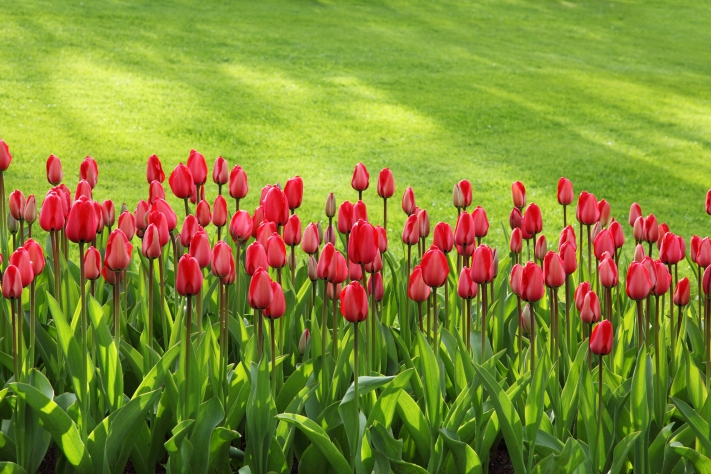St Barnabas Church, with its Italianesque tower that presides from a great height over Jericho, is an excellent concert venue; it's spacious, cosy on a cold evening, with good acoustics and clear sight-lines for the audience, here a healthy 100 or so. Add in a friendly welcome from Michele Toler and Caroline Knox, the spice of a brand-new conductor for the OUP Orchestra, and there was strong potential for another demonstration, were any needed, of the strength of Oxford amateur music. And so the pudding proved in the eating.
We began with Schubert's Symphony No. 8, the Unfinished, to my perhaps idiosyncratic mind the finest symphony bar none of the first half of the 19 th century; to say this of a work missing its last movement is to say something indeed. If I wished that it might have ended the programme rather than begun it, that's simply to say that for me almost anything following it must be an anti-climax. The first notes were mysteriously outlined by the orchestra's excellent cello and bass section, followed by the gently rustling accompaniment from the violins, here a little thin and quavery until they warmed up.
Certainly by the time conductor Joseph Beesley took the players through to the coda at the end of the movement that flares up in a final dramatic gesture, the brooding quality of the music had been well illustrated. Beesley, an upright undemonstrative figure with the baton, was clearly keen to take the slow movement 'con moto', as marked, rather than fall into any lethargy of tempo as we passed though the stately melody later mined by Elgar in his Symphony No. 1 , the horns sounding smoothly, the violins driving rhythmically, and notable work from the oboes of Aldus Whitfield and Dani Pleuvry, whose playing was a constant delight all evening.
In the interval there was time to take in the interior of St Barnabas, its statues shrouded for Lent in the Roman Catholic and Anglo-Catholic traditions. Thomas Combe, who coughed up the money for its construction (£7,300, in 1871), was an early patron of the Pre-Raphaelites and this is readily appreciated in the leaning of the decoration of the retable in the RH chapel, on the pulpit and in the long rows of martyrs between the clerestory windows, towards the Greek Orthodox tradition, with dark gold leaf everywhere you look, together with liberal use of brown pigment. The presence of God the Father as Pantocrator on the turquoise-painted apse, below which hang five lighted sanctuary lamps, confirms this exotic impression.
Mozart's 'Paris' Symphony No. 31 begins with a bold gesture, 'le coup d'archet,' quick separated string chords, and the fiddles and violas did actually give out lots of energy, lasting until the arrival of the lighter second theme. The twin themes of the 'allegretto' are solemn, even high-minded, and here the cellos and two basses came into their own, producing quite a noble sound. The movement is a nice illustration of one of the cardinal virtues of Mozart's compositions: his ability always to convey a sense of onward thrust that may lie half-concealed but never fully so, within a courtly carapace. The quiet, syncopated subject of the finale, composed as a surprise to take Mozart's Parisian listeners out of their comfort zone, gives way to a contrasting subject in which I noted good work from the bassoons of Georgie Malcolm and Andrew Mackintosh.
Brahms' Tragic Overture from 1880 is no funeral march or lament for a Siegfried or a Vice-Admiral Nelson. It was probably no more than an abstract exercise in the tradition of Beethoven’s Coriolan Overture or Liszt’s Hamlet. It doesn't even seem to have mirrored any disaster or tragedy in Brahms’ personal life which was fairly placid and most circumspect.
After the two piercing, opening chords, Joseph Beesley took it fairly fast, I thought; the opener surely at 'allegro' pace, though it's marked as 'allegro ma non troppo' [not too much] and the finale almost as fast, though marked 'primo ma tranquillo' (as per the 1 st movement. but calm]. I guess he was understandably wary of the piece being played as a dirge or any kind of slow march. The darkening in tone from the two earlier programmed works was apparent in its darker sonorities, and particularly in the contribution from the trombones and horns. Geoff Bushell, one of the unsung and wonderfully versatile mainstays of Oxford music, was playing his horn as a second trombone, the orchestra (as often the case with amateur bands) being thin on trombones. Beesley was careful not to unleash the full force of the pathos too soon, producing more a gradual emotional crescendo.
This was quite an abbreviated concert, the conductor having told me at the interval of his understandable wish not to over-extend himself in his first engagement with the orchestra. I'd say he passed the test, if test it was, with flying colours. Onwards and upwards!




